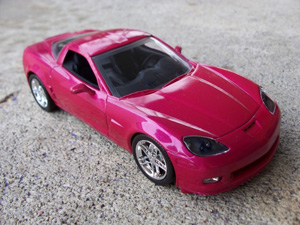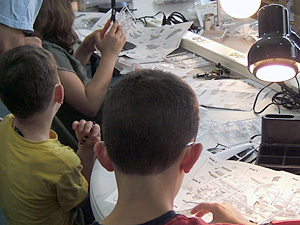If you're a parent, you're probably often looking for toys that can help your children develop as well as keep them entertained. Or, if your kids are a little older, maybe you'd like to try getting them into something that doesn't involve staring at some type of screen. Whatever the exact reason may be, the movement towards "educational toys" has been gaining momentum lately with specialty blocks, interactive books, and "smart" dolls. But one toy/hobby that often gets overlooked is one that's been around for centuries: scale modeling.
[Building toys] are the products that provide support for learning to create, developing eye-hand coordination, placement of objects and basic math concepts and much more.- Dr. Toy
It seems like nearly everyone recognizes the hobby to some degree. Ask most people about scale modeling and you can get answers ranging from "I used to do that when I was a kid" to "my [insert relative] used to build those all the time" to "that's what they did in [insert TV show/movie]." But despite this recognition, few people encourage their kids to give it a try. This is especially odd when you consider how flexible the hobby is.

Hot Pink Z06 by Pokey6733's daughter, age 7
For the youngest children, a good way to get them started is with something simple, like building blocks. Slightly older children can start with building sets, like those provided by LEGO, K'Nex, Wedgits, etc. As they progress in age and skill they can switch to basic plastic and metal kits, where they can develop their skills working with tools and creating more complex pieces. From there, the sky is the limit: car enthusiasts can continue their work with automotive kits or radio controlled vehicles, history buffs can focus on military figures or dioramas of famous events, sci-fi fans can recreate their favorite robots and spacecraft, and so on. These steps may take years to develop, or could happen very quickly: the important thing is to let new builders develop at their own pace, providing them with enough challenges to keep them interested but not frustrated.
Model building at all skill levels is also a great way to spend time together. You can share both the actual work as well as ideas for the build, and when you're finished you will have something to look at and say, "we did that." Tangible results like this are essential to every age. Too often, our daily lives produce lots of work but no clear results. When was the last time you finished a project and afterwards had something solid that you could actually physically touch? Even small projects - a LEGO set, a snap-tite Camaro, or a simple dinosaur kit - will produce something that you and your child can take pride in. You can even take this a step further, by photographing the finished project and putting the photo up on a bulletin board or e-mailing it to relatives. This increases the sense of accomplishment in your child, and will encourage them to take on new projects.
You can also encourage children to start building by showing them examples of built models. Take them to a local hobby store or model show, build a few yourself to serve as examples, or show them websites that feature completed models. Finished projects like this will often spark their desire to create something on their own, even if their project turns out very different from what they originally saw. Some children may want to meticulously follow the instructions to recreate the photos on the box art, while others will want to turn their van into a rocket ship. That's the beauty of this hobby: there is no "right" way of doing it.
Hopefully by now you're at least willing to give it a try (if you haven't already). But if you're still at a loss about where to start getting a kit or supplies, try some of these links:
- HobbyLink Japan - HobbyLink Japan has been an online distributor for Japanese models and toys for over a decade now, and their inventory covers everything from monsters to robots to vehicles. They also sell building supplies, display cases, and reference material.
- HobbyTownUSA - If you prefer to check things out in person before you make a purchase, check here to see if there's a HobbyTown USA nearby. They carry just about every type of model available, so you should definitely be able to find something to interest you.
- Moebius Models - Moebius is a great source for reissues of classic kits, along with some new offerings as well. The bulk of their inventory comes from Aurora, so they tend to focus on science fiction and monster models.
- Revell.com - One of the best-known names in the hobby, Revell offers a wide range of kits from cars to aircraft to military vehicles. They also have a "Make 'N Take" program, where they provide a carton of 25 kits at a low cost for special events to encourage new modelers. See Revell's Make 'N Take page or contact them at (800) 637-7660 x 1184 for details.
- Round 2 - Round 2 generally focuses on vintage and licensed vehicle kits, particularly those originally producted by AMT, Lindberg, MPC, and Polar Lights. Because of the number of popular subjects covered, there is sure to be something to pique your child's interest.

Revell's "Make 'N Take" program provides the opportunity for kids to try out model building under the guidance of experienced builders.